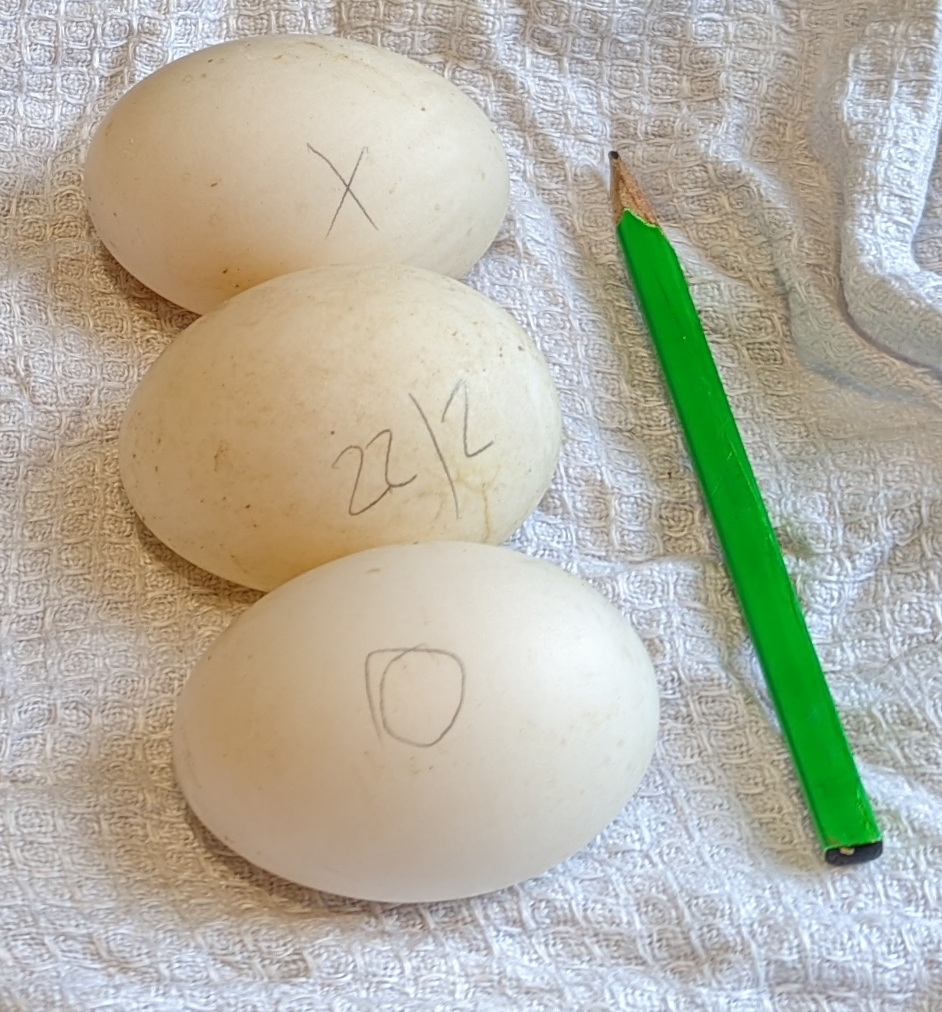How to mark eggs safely.

Here in the UK it is a legal requirement for anyone with 50 or more laying hens to mark their eggs to show they are farmed, where they come from and a unique premises identification number.
Egg marking is the process of printing or writing on the shell of eggs to keep track of the production date, location and if necessary, the breed of chicken that laid the egg.
Eggs are marked commercially by a machine which prints the best before date and the production code on the egg shell in red food safe ink.
Why mark eggs?
All eggs should be given some sort of stamp or mark so as they can be identified.
You need to mark eggs to:
- Identify their production date,
- Show whether they are organic, free range or caged.
- Prove which flock the eggs came from,
- Identify the breed,
- Easily show that the egg roller is working in the incubator.
Is it safe to write on or stamp eggs?
It is safe to write on egg with a pencil or child safe marker pen. Eggs should be dated on the collection day and stored securely.
You can use a lead pencil to mark eggs as it contains no lead, they are graphite and quite safe for marking hens eggs.
Egg shell is porous and anything you put on the outside gets inside.
Genuine Sharpies are great but some, like the cheap ones out of China do contain toxic chemicals.
How to date mark fresh eggs:
The best way to mark fresh eggs for eating is to write the date in pencil on the round end of the egg in the shortest format you can.
If you are selling your eggs you may also need to display:
- The name of the producer,
- The address,
- The best before date,
- Storage advice after purchase.
More on the legal side of selling eggs.
What to use to mark hatching eggs:
If you are marking eggs to be incubated you should make sure you use a method that will not fade or run in a moist environment.
The inside of incubators are damp places that could wash the marks off the shell in a couple of days.
Do not use crayons , pastels or wax pens to write on eggs, the wax will block the pores in the shell and may effect your hatch.
Below: this is the pencil I use to mark my eggs, I make sure the point is not too sharp otherwise it may crack the shell.

If you are using a broody hen the pencil marks wear off in a few days as the hens roll the eggs around and rub them against their skin.
It is safe to mark eggs with a sharpie as the ink is certified to be non toxic. You should take care when using permanent marker pens to write on eggs as the ink contains solvents that may get into the egg. It may be best to stick to using a pencil to mark eggs.
With a pencil there is less chance of infection and seeping.
You can use a selection of coloured pencils and put different colour markings on the eggs of different breeds
What do the marks on eggs mean?
In the UK and EU egg codes have:
- A number indicating the method of production, O for organic, 1 for free range, 2 for deep litter indoor and 3 for cage farmed hens.
- A two letter code for the country of origin.
- A unique producer registration number indicating the hen laying establishment.
The egg stamp is required in the EU on all class A eggs unless these are sold directly on the farm. In the UK nearly all eggs comes with the lion quality mark.
Some countries add a region code.
